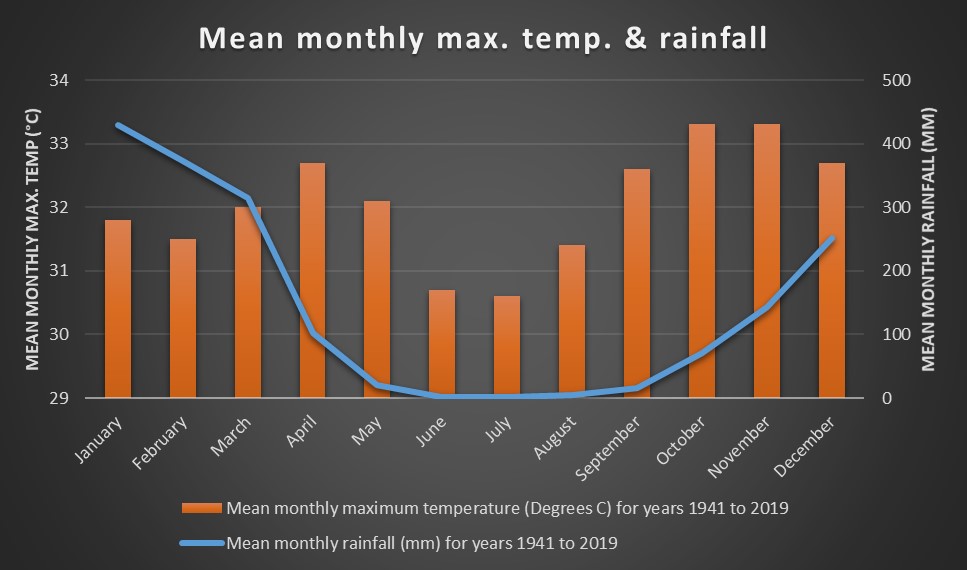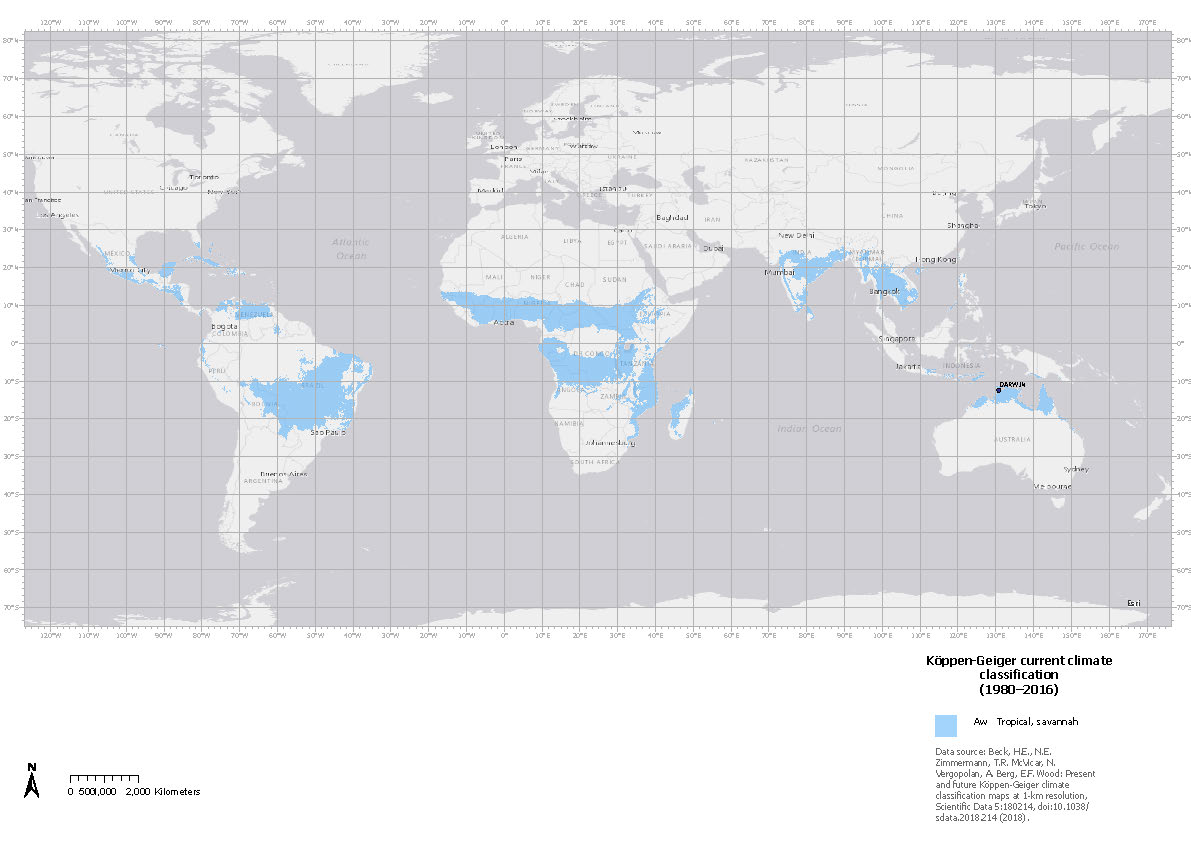Darwin’s
Climate
The wet/dry tropics
Darwin is situated in Australia’s wet/dry tropics. Darwin has a tropical savanna climate that is defined by distinct wet and dry seasons. Very little rainfall occurs between May and October, with the dry season also having more moderate temperatures. Thermal comfort is lowest during the build-up to the wet season with higher maximum temperatures and increased relative humidity. The climate is more comfortable during the dry season (May to September) when humidity and overnight temperatures are lower.
Image source: BoM data from the Darwin Airport


Future Climate
Average temperatures in Northern Australia have already increased by 0.9°C since 1910. Climate change models project that in the future Darwin is likely to experience more hot days1. Darwin can also expect significant increases in hot spells, with the number of days per year above 35°C projected to increase by ~43 by 2030 and ~111 to 265 days by 20902. This is already being observed – in 2019 there were 45 days above 35°C, including 11 days in a row. It also saw the highest daily minimum ever recorded, at 30.2°C.
This highlights the need now to plan for a Darwin city that is responsive to the wet-dry tropical climate.
The NT Government and the City of Darwin are both committed to reducing greenhouse gas emissions The NT Government’s ‘Climate Change Response: Towards 2050’ strategy and three year action plan outline a range of actions, some of which relate to heat mitigation.

Global analogues

References
- Webb, L.B. and Hennessy, K. 2015, Projections for selected Australian cities, CSIRO and Bureau of Meteorology. https://www.climatechangeinaustralia.gov.au/media/ccia/2.1.6/cms_page_media/176/CCIA_Australian_cities_1.pdf
- Moise, A. et al. 2015, Monsoonal North Cluster Report, Climate Change in Australia Projections for Australia’s Natural Resource Management Regions: Cluster Reports, eds. Ekström, M. et al., CSIRO and Bureau of Meteorology, Australia
- Beck, H.E., N.E. Zimmermann, T.R. McVicar, N. Vergopolan, A. Berg, E.F. Wood (2018) Present and future Köppen-Geiger climate classification maps at 1-km resolution, Scientific Data 5:180214, doi:10.1038/sdata.2018.214
ACKNOWLEDGEMENT
Your Tropical City acknowledge the Larrakia people as the Traditional Owners of the Darwin region and pay our respects to Larrakia elders past and present. We are committed to a positive future for the Aboriginal community.
564 Vanderlin Drive,
Berrimah NT 0828
(08) 8944 8436
hello@yourtropicalcity.com.au
PARTNER
ACKNOWLEDGEMENT
Your Tropical City acknowledge the Larrakia people as the Traditional Owners of the Darwin region and pay our respects to Larrakia elders past and present. We are committed to a positive future for the Aboriginal community.
CONTACT
564 Vanderlin Drive,
Berrimah NT 0828
(08) 8944 8436
hello@yourtropicalcity.com.au
PARTNER